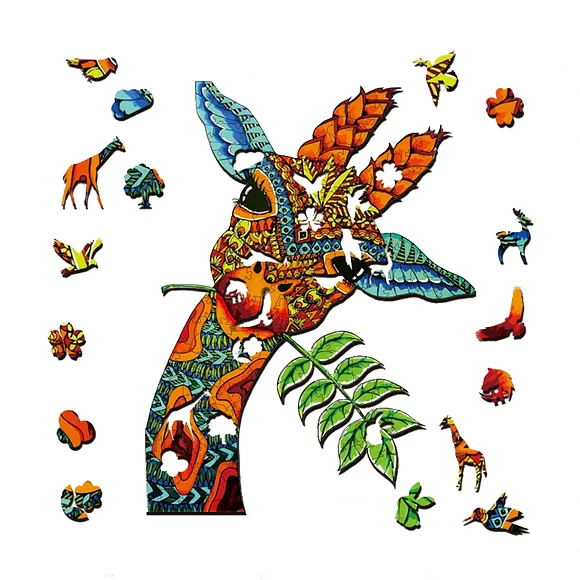
Jigsaw puzzles have been a popular pastime for people of all ages for centuries. They have been used to teach geography, history, and science, as well as to relax and unwind. The Curious Giraffe Jigsaw Puzzle is a beautiful and intricate puzzle that is sure to capture the attention of anyone who loves jigsaw puzzles. In this blog, we will explore the fascinating world of jigsaw puzzles and take a closer look at the Curious Giraffe puzzle.
The History of Jigsaw Puzzles
The first jigsaw puzzles were created in the 1760s by John Spilsbury, a London engraver and mapmaker. Spilsbury created the puzzles as an educational tool to teach geography. The puzzles were made of wood and were cut into pieces that fit together to form a map of a country or continent. Jigsaw puzzles gained popularity in the 19th century when cardboard was invented, making the puzzles more affordable and accessible to the general public.
Over the years, jigsaw puzzles have evolved into a wide range of themes and designs. From scenic landscapes to famous artwork, from animals to famous landmarks, there is a jigsaw puzzle for everyone.
The Curious Giraffe Jigsaw Puzzle
The Curious Giraffe Jigsaw Puzzle is a beautiful and intricate puzzle that features a stunning image of a curious giraffe. The puzzle is made up of 1,000 pieces and is suitable for adults and children over the age of 12. The finished puzzle measures 27 inches by 20 inches and is perfect for framing and displaying.
The puzzle is made from high-quality materials and features a precision cut that ensures each piece fits perfectly together. The image on the puzzle is vibrant and detailed, making it a joy to work on.
Tips for Solving Jigsaw Puzzles
Solving a jigsaw puzzle can be a relaxing and rewarding experience. Here are some tips to help you get started:
-
Sort the Pieces: The first step in solving a jigsaw puzzle is to sort the pieces. Separate the edge pieces from the rest of the puzzle pieces and sort the remaining pieces by color and pattern.
-
Work on the Edges: Start by working on the edge pieces. This will give you a framework to work within and will make it easier to fit the rest of the pieces together.
-
Build from the Bottom Up: Once you have the edge pieces in place, start building the puzzle from the bottom up. This will give you a solid foundation to work with.
-
Take Breaks: Don't be afraid to take breaks when working on a jigsaw puzzle. It can be a relaxing activity, but it can also be tiring on the eyes and brain. Take breaks as needed to avoid burnout.
-
Use a Puzzle Mat: If you don't have a dedicated space to work on your puzzle, consider using a puzzle mat. A puzzle mat allows you to roll up your puzzle and store it away when you're not working on it.
The Benefits of Solving Jigsaw Puzzles
Solving jigsaw puzzles has a number of benefits beyond just being a fun pastime. Here are some of the benefits:
-
Improves Cognitive Function: Solving jigsaw puzzles requires a lot of cognitive function, including visual-spatial reasoning, attention to detail, and problem-solving skills. Regularly working on puzzles can improve these skills and keep the brain sharp.
-
Reduces Stress: Solving puzzles can be a relaxing and meditative activity that can help reduce stress and anxiety.
-
Provides a Sense of Accomplishment: Completing a jigsaw puzzle can provide a sense of accomplishment and satisfaction, which can boost